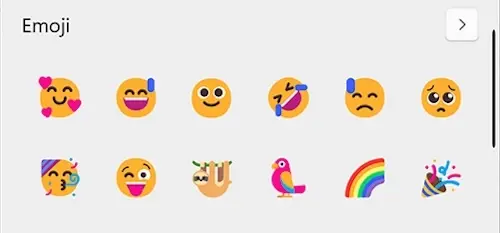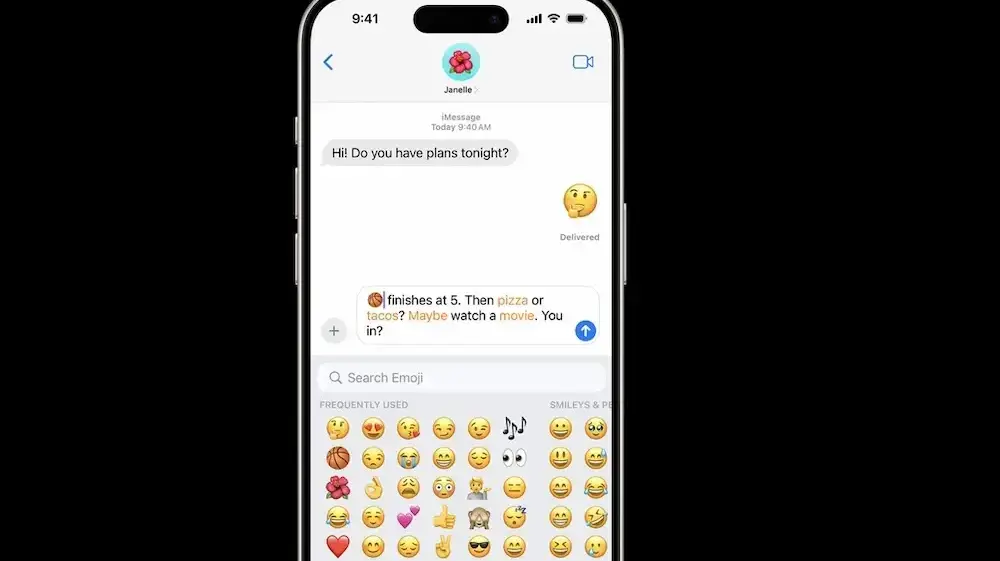Ever wondered how people effortlessly add those fun little emojis into their messages without opening a whole emoji keyboard? You don’t need to scroll through endless emoji lists to express yourself. Instead, you can use your keyboard to create emojis in a matter of seconds. You just need to know the right keys to press and you’ll be all set.
In this guide, we’ll walk you through how to do that on various devices and platforms. There’s no time to waste, so let’s dive right in and get those shortcuts down!
Why Use Keyboard Shortcuts for Emojis?
Before we get into the how, let’s talk about the why. Why should you learn to make emojis with a keyboard? Well, there are some reasons to consider.
First, let’s talk about speed. It’s quicker to use keyboard shortcuts than switching between the text and emoji keyboards. And since we’re all in a rush most of the time, it makes perfect sense to get those emoji shortcuts figured out.
You can also use keyboard shortcuts while typing anywhere. Yes, that includes documents, emails, and messaging apps. So the convenience factor is a big consideration as well. The less switching between menus or keyboard options, the better.
Another big benefit is the fact that these shortcuts work across various platforms, so they save you time whether you're on your phone or computer. So, learn the appropriate ones for the devices you use, and you’ll be all set.
Makes sense right? So, now that you’re convinced, let’s break down how to actually make emojis with a keyboard, categorized by the different devices you can use.
1. Make Emojis with a Keyboard on Windows
If you’re using a Windows operating system, you’ll need to know the specific keys to press on these computers to create emojis.
Thankfully, Microsoft made it pretty simple to add emojis on Windows devices, especially after Windows 10.

Here’s the easiest way to go about it:
Press the Windows key + Period (.) or Windows key + Semicolon (;).
This will open the emoji panel on your screen.
Just click the emoji you want, and it’ll be inserted wherever your cursor is.
That’s it. Quick and easy. If you’re looking for specific emoji categories like smileys, animals, or flags, they’re all organized for you in this window.
Popular Keyboard Emojis You Can Type Manually
If you prefer typing out old-school emoticons, here are some classics that you can make without even opening the emoji panel:
: ) for 😊 (smiley)
; ) for 😉 (wink)
: P for 😛 (stuck out tongue)
: D for 😃 (big grin)
These are simple text-based symbols that automatically convey emotion, and some apps will even auto-convert them into actual emojis!
2. Make Emojis on MacOS
Macs have a super handy emoji shortcut too. Here’s how to pull it up:
Press Command + Control + Spacebar.
This will bring up the emoji picker, which you can scroll through and select any emoji.
Text-Based Emojis for Mac
If you're like me and sometimes prefer not leaving the keyboard, Mac also supports a few text shortcuts to convert text into emojis:
Type :) and it becomes 😊.
Type ;) and it becomes 😉.
Additionally, if you know the emoji you want, you can start typing its name (e.g., "smile") in certain apps, and a suggestion will pop up, which is pretty cool!
3. Adding Emojis on iPhone
iPhones have made emoji input a breeze. But did you know you don’t need to flip through pages of emojis? You can actually auto-insert emoji is from the text you type.

How to Use Keyboard Text Replacements for Emojis on iPhone
Go to Settings > General > Keyboard > Text Replacement.
Tap the + in the top right corner.
In the “Phrase” section, paste or type the emoji you want (e.g., 😊).
In the “Shortcut” section, create a shortcut (e.g., “ ”).
Now every time you type "
," your iPhone will automatically replace it with 😊!
Quick Emoji Suggestions
iOS also offers predictive text suggestions based on what you type. Simply type a word like “smile” or “sun,” and the relevant emoji will pop up in the suggestion bar above the keyboard.
4. Creating Emojis on Android
You can use emoji shortcuts on Android devices as well. These definitely come in handy when sending messages or writing.
Tap into any text field where you want to insert an emoji.
Hold the Enter key or Smiley Face key (depends on your keyboard).
The emoji panel will pop up, and you can pick the one you need.
Text Replacements for Emojis on Android
If you want to get fancy and add shortcuts similar to iPhone’s text replacement feature, here's how you can set it up on Gboard:
Open Gboard and go to Settings > Dictionary > Personal Dictionary.
Select your language, then tap + in the top-right corner.
In the “Word” field, type the emoji (e.g., 😊).
In the “Shortcut” field, type your custom shortcut (e.g., "
"). Now, typing " " will give you 😊 instantly!
5. Make Emojis on Web Browsers (Chrome, Edge, Firefox)
If you're using a web browser on your computer, adding emojis is straightforward too:
Many browsers, like Chrome or Edge, support the Windows or Mac emoji picker shortcuts. Use Windows key + Period (.) for Windows or Command + Control + Spacebar on Mac to insert emojis directly into online forms, social media posts, or emails.
6. Typing Emojis on Web Platforms
Some platforms, like Slack, Discord, and X, allow you to type the emoji name surrounded by colons (e.g., :smile:) to automatically insert an emoji. Once you get the hang of these platform-specific shortcuts, you'll be able to communicate even faster. Again, no need to scroll through an endless stream of emojis when you can type them in.
7. Fun with Emoticons and Unicode Symbols
If you like being creative with keyboard symbols, you can go beyond simple emojis and craft your own with characters:
(◕‿◕) for a cute happy face
(╯°□°)╯︵ ┻━┻ for the infamous table flip
ʕ•ᴥ•ʔ for a bear face
Many people still use these expressive combinations because they can convey so much personality. Plus, these work everywhere, as they’re just text – no actual emojis required.
Learn to Make Emojis Anywhere
Adding emojis with your keyboard is super simple once you know the right shortcuts. Whether you're using Windows, Mac, iPhone, or Android, there’s always a quick way to insert your favorite emojis without having to search through emoji panels.
Will you give some of these shortcuts a try? If so, it’s likely you’ll find yourself responding to messages and emails faster and sprinkling in a bit of fun as you do. And there’s no reason why you can use these tips when putting together your website, too. Adding a touch of personality is never a bad thing. And with Verpex Hosting, you can get your site up and running in no time.
Frequently Asked Questions
How do AI web design tools enhance the creative process for professional designers?
AI web design tools automate repetitive tasks, analyze user data for insights, and suggest web design ideas, allowing designers to focus on more complex and creative aspects of site design.
What makes a good glassmorphism website design?
A good glassmorphism website design features a harmonious balance of blurred backgrounds, light and shadow effects for depth, and minimalistic elements that draw attention without overwhelming the user, all while maintaining legibility and a clean layout.
What is the glassmorphic effect in UI design trends?
The glassmorphic effect is a UI design trend that utilizes semi-transparent backgrounds, resembling virtual glass, to create a sense of depth and dimensionality in web design.
How do I choose a design for my website?
One of the most important things when creating a website for your art is the design. Even though your pieces of art might be amazing, people will leave if your site is hard to navigate. This is why it’s important that the site is easy on the eyes and easy to navigate.

Brenda Barron is a freelance writer and editor living in southern California. With over a decade of experience crafting prose for businesses of all sizes, she has a solid understanding of what it takes to capture a reader's attention.
View all posts by Brenda Barron




















